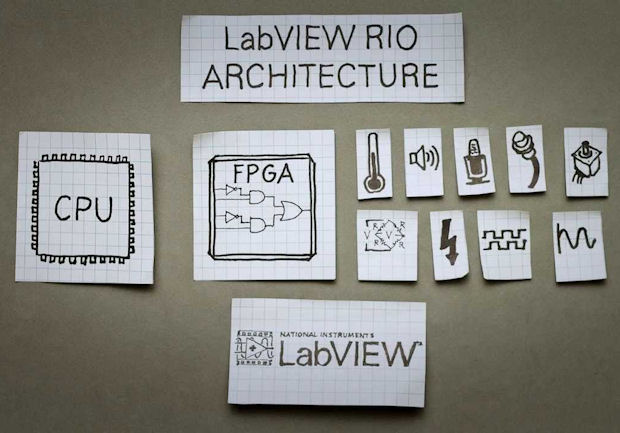NI’s LabVIEW RIO Architecture Lets You Focus on Innovation
Latest News
June 10, 2014
 Dear Desktop Engineering Reader:
Dear Desktop Engineering Reader:
If you’re building a house, do you mine, cut and polish the granite for your kitchen countertops? Not likely. Stonemasons have off-the-shelf slabs of granite that can be custom fit to your needs. OK then, so say you’re designing a test and measurement system. Why would you spend so much time and effort building the hardware and developing code when there is off-the-shelf programmable hardware ready to be customized to your needs? That’s the key question raised at the other end of today’s Check it Out link.
The link takes you to a landing page on LabVIEW reconfigurable I/O (RIO) from National Instruments. Though landing page doesn’t really cut it as a descriptor. This webpage is the mother lode of data on working with LabVIEW system design software and reconfigurable hardware. But first, a little background.
LabVIEW reconfigurable RIO architecture is off-the-shelf hardware that integrates with LabVIEW system design software. That is, it’s ready to be programmed with LabVIEW for your needs. The hardware has three main elements: a processor, a reconfigurable FPGA (field-programmable gate array) and measurement I/O hardware. The LabVIEW graphical system design environment can readily program this hardware. That is, it has the algorithms, functions and capabilities that make the hardware useful, saving you coding time. And it’s designed to be easy for you to use.
What’s the benefit of this relationship for you? Integrated hardware and software simplifies and speeds up system development, perhaps even dramatically for some of you still clutching to what you learned in the ’90s. This, in turn, should accelerate productivity, innovation, deployment and discovery.
The landing page serves as your entryway into a diverse set of resources to help you better understand what the LabVIEW RIO architecture is all about, how you work with the LabVIEW RIO architecture in various disciplines, and what NI has available. There are four main subsections representing disciplines on the page: Automated Test, Embedded Control and Monitoring, RF and Wireless Test and Student Design. We’ll use the Automated Test subsection as our main example. Each subsection follows an identical format.
The Automated Test subsection offers some introductory text and two links. When you hit the first link, here called “Explore test hardware targets,” you jump to a page where you can browse through the RIO platform types NI offers for test and measurement applications. These include multifunction boards and RF instruments. Click on the “learn more” link associated with a platform that interests you and off you go to a full listing of available products. From there, you can drill down and identify a product that has the capabilities to meet your requirements, read spec sheets, access discussions, take in a webcast and so on to build your knowledge base.
The second link in the Automated Testing subsection offers you three case studies on how RIO hardware and LabVIEW system design software were used in the field and the benefits gained in the real world. A notable report here explains how Analog Devices reduced the cost of MEMs (micro-electro-mechanical systems) testing.
Among the interesting items to check out while you’re going through the other subsections are the webcasts at the end of the Embedded Control and Monitoring subsection. And even if RF and wireless test seems like something that’s out of your purview, learn about it. It’s cool stuff. NI’s vector signal transceivers are high-function devices that can enable you to do monitoring and testing in ways not easy to realize before. Make sure to read the Hittite Microwave case study to get an idea of the potential that lies here.
The NI LabVIEW RIO Architecture resource is an interesting affair from top to bottom. It’s a different approach to collating and disseminating an enormous amount of information. And it works. If you are curious about the LabVIEW and RIO architecture integration or if you need to find the right hardware for a job right away, this collection is a definitive resource that should meet your needs and exceed your expectations.
Thanks, Pal. – Lockwood
Anthony J. Lockwood
Editor at Large, Desktop Engineering
Subscribe to our FREE magazine, FREE email newsletters or both!
Latest News
About the Author
Anthony J. Lockwood is Digital Engineering’s founding editor. He is now retired. Contact him via [email protected].
Follow DE






